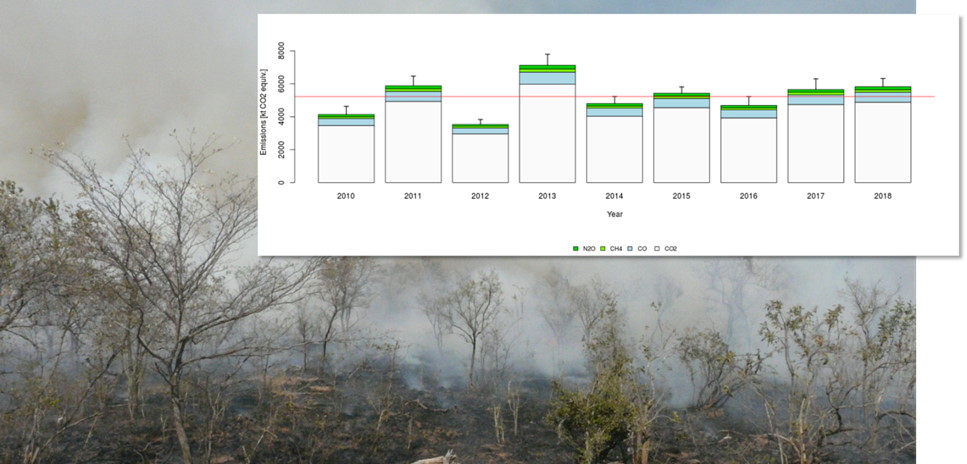
Managing and reducing emissons from controlled burns and wildfires is an increasingly important objective in fire management. Emissions from fires influence the global climate and affect the environment and human health. Projects aiming at reducing emissions may qualify for climate mitigation finance, provided that they can actually prove a reduction of emissions. Knowledge about the fire history and a baseline of fire emissions, as well as efficient and reliable monitoring is therefore the key to success.
In a new white paper, we describe the methods used for estimating smoke emissions from fires in firemaps.net and show how practical applications for reducing greenhouse gas emissions from fire can be implemented using the tools provided by firemaps.net. Our method is based on direct observation of the actively burning fire using satellites observing Earth with infrared sensors. These sensors are able to measure the heat emitted from fires. The amount of heat released during a fire is proportional to the amount of biomass burned, and biomass burned in turn is proportional to emissions of greenhouse gases and other smoke constituents. Using this method therefore offers an opportunity for directly deriving fuel consumption and emissions from remote sensing data. The paper describes the estimation model and data used to derive fuel consumption from multiple satellite observations of active fires and burned areas, and the conversion of fuel consumption to smoke emissions. A comparison to field data is also provided. A detailed discussion of the achieved accuracy and sources of uncertainties is provided in the annex. In the concluding part of the white paper we describe practical applications with a focus on savanna ecosystems, first discussing the role of fire and CO2 and Non-CO2 greenhouse gas fluxes in savannas. A good understanding of fire regimes in potential project areas is required to plan for mitigation projects. Hence the role of establishing a fire emissions baseline for planning of emission reduction activities is described. Shifting of burning patterns has been shown to be an option to achieve reductions in fire emissions. We show how this can be planned, implemented and documented in firemaps.net with examples from West Africa and Brazil. Apart from directly reducing fire emissions, improved fire management, e.g. through using prescribed burning, can also help to increase carbon stocks when fire intensities are managed. How this can be done will be a key topic in a forthcoming white paper. Finally we point out how firemaps.net information products can help building a proposal to acquire funding through mechanisms such as the green climate fund.
Get the white paper (You may need to login or register).